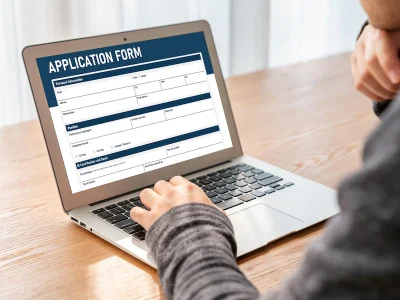Breaking A Lease: What Are Your Options and Obligations?

How much does it cost to break a lease? This is a question that many tenants ask when they want to move out of their rented house or apartment before their lease term ends.
A lease agreement is a contract that binds both the landlord and the tenant to certain terms and conditions. These include the rent amount, the duration, the responsibilities, and the rights of both parties.
Breaking a lease agreement means prematurely violating the contract and ending the rental relationship. If you are a tenant who wants to break a lease agreement, there is something you should know! And these are your options and your obligations. You also need to know how much it costs to break a lease contract and how to minimize the cost and the risk.
If these are some of the things you want to know, you have reached the right place! In this article, I will explain how to break a lease agreement. I will also guide you about the possible costs, consequences, best practices, and tips.
Everything You Need To Know about Breaking A Lease!

Breaking a lease agreement can have serious consequences for both the landlord and the tenant. For the landlord, breaking a lease agreement means losing a source of income and finding a new tenant.
For the tenant, breaking a lease agreement means facing legal and financial penalties. These can be losing their security deposit, paying a termination fee, or being sued for damages. Breaking the agreement can also affect the tenant’s credit score and rental history. This will make finding a new place to live harder.
However, breaking a lease agreement is not always impossible or unreasonable. Sometimes, tenants may have valid reasons or circumstances that justify breaking a lease agreement. It might be a job loss, a health issue, a family emergency, a safety concern, or a landlord’s breach of contract.
Sometimes, tenants may also have legal rights or protections that allow them to break a lease agreement without penalty. These include a military clause, a domestic violence clause, or a constructive eviction clause.
How to Break a Lease Agreement: Get to Know the Nook!

Breaking a lease agreement is not a simple or easy process. It requires careful planning and preparation and clear and honest communication. Here are the steps that you need to follow to break a lease agreement:
Review your lease agreement
The first thing you need to do is review your lease agreement. Find out the terms and conditions that apply to breaking a lease agreement. You need to look for any clauses or provisions that specify the notice period, the termination fee, the damages, or the exceptions.
You also need to check the laws and regulations of your state, county, and city. See if they offer additional rights or protections for tenants wanting to break a lease agreement.
Furthermore, you can learn more about your area’s laws and regulations. For that, visit the website of your state’s attorney general or consumer protection agency or consult a lawyer or a legal aid organization.
Talk to your landlord
The second thing you need to do is talk to your landlord. Explain your situation and reason for breaking a lease agreement. You must be polite and respectful and try to reach a mutual understanding and agreement with your landlord.
You can also offer to help your landlord find a new tenant. Furthermore, you can offer to pay some or all of the rent until a new tenant is found. Above all, you can also ask your landlord to waive or reduce any fees or penalties or release you from liability.
You must ensure that you have everything in writing and signed and a copy of the agreement for your records.
Move out and clean up
The third thing you must do is move out and clean up the property. You must pack your belongings, leave the property in good condition, and repair any damages or defects you have caused.
You also need to do a walk-through inspection of the property with your landlord. Then, document the condition and any issues with the property. Additionally, please take photos or videos of the property and have your landlord sign and date them.
Also, you need to return the keys and any other items that belong to the landlord and get a receipt or confirmation from your landlord. You also need to provide your forwarding address and contact information to your landlord. Then, request your security deposit back from your landlord.
What are the Possible Costs and Consequences of Breaking a Lease Agreement?

Breaking a lease agreement can have various costs and consequences for the tenant, depending on the lease agreement, the landlord, and the situation. Some of the possible costs and consequences are:
Losing your security deposit
Your security deposit is a sum of money you pay your landlord when you move in, which your landlord holds until you move out. Your landlord can use your security deposit to cover any unpaid rent, fees, damages, or cleaning costs that you owe to your landlord when you move out.
If you break a lease agreement, your landlord may keep your security deposit or deduct some or all of it from your refund. You can avoid losing your security deposit by paying your rent and fees, leaving the property in good condition, and following the move-out procedure.
Paying a termination fee
A termination fee is a sum of money that you pay to your landlord when you break a lease agreement and that your landlord charges to compensate for the loss of income and the cost of finding a new tenant.
A termination fee may be a fixed amount, a percentage of the remaining rent, or a number of months’ rent. If you break a lease agreement, your landlord may charge you a termination fee unless you have a valid reason or a legal right to break a lease agreement without penalty.
You can avoid paying a termination fee by negotiating with your landlord or finding a new tenant to take over your lease.
Being sued for damages
Damages are the losses or harms that your landlord suffers as a result of your breaking a lease agreement, such as the rent difference, the advertising cost, the screening cost, or the legal cost.
If you break a lease agreement, your landlord may sue you for damages and seek a judgment or a garnishment against you. You can avoid being sued for damages by paying your rent and fees or settling with your landlord out of court.
Affecting your credit score and rental history
Your credit score is a number that reflects your creditworthiness and your ability to pay your debts. Your rental history records your past and current rentals and your performance and behavior as a tenant. If you break a lease agreement, your landlord may report your breach to the credit bureaus or the tenant screening agencies, negatively affecting your credit score and rental history.
You can avoid affecting your credit score and rental history by paying your rent and fees, maintaining a good relationship with your landlord, and disputing any errors or inaccuracies in your credit report or rental report.
What are the Best Practices and Tips for Breaking a Lease Agreement?
Breaking a lease agreement is not a decision that you should take lightly or impulsively. You should make a decision carefully and wisely, considering all the factors and implications. Here are some of the best practices and tips for breaking a lease agreement:
Have a valid reason or a legal right
Before you break a lease agreement, you must have a valid reason or a legal right to do so. You need to check your lease agreement and the laws and regulations in your area.
See if they allow you to break a lease agreement without penalty or provide any grounds or defenses for breaking a lease agreement.
Some of the common reasons or rights for breaking a lease agreement are:
Military service
If you are an armed forces member and receive orders to relocate or deploy, there is something that you can do. Under the Servicemembers Civil Relief Act (SCRA), you can break a lease agreement without penalty.
You must provide your landlord with a written notice and a copy of your orders. Additionally, you can terminate your lease agreement 30 days after the next rent payment is due.
Domestic violence
Suppose you are a victim of domestic violence, and you need to move out for your safety. Under some state and local laws, you can break a lease agreement without penalty.
You must provide your landlord with a written notice and proof of your victim status. These can be a restraining order, a police report, or a medical report. Then, you can terminate your lease agreement immediately or within a certain period of time.
Constructive eviction
Suppose your landlord fails to provide you with a habitable and safe property or interferes with your quiet enjoyment of the property. In that case, you can break a lease agreement without penalty under the doctrine of constructive eviction.
You must provide your landlord with a written notice and a reasonable time to fix the problem. And you can terminate your lease agreement if the problem persists or worsens.
Communicate with your landlord
When you break a lease agreement, you need to communicate with your landlord clearly and honestly. It would be best to inform your landlord of your intention and reason for breaking a lease agreement. Then, try to reach a mutual understanding and agreement with your landlord.
You must be polite and respectful and avoid conflicts or confrontations with your landlord. Also, you need to document everything in writing and sign and keep a copy of the communication for your records.
By communicating with your landlord, you can maintain a good relationship and a good reputation and avoid any misunderstandings or disputes with your landlord.
Find a new tenant
When you break a lease agreement, you must find a new tenant to take over your lease or sublet your property. Many people might want to lease a house instead of buying one! You need to get your landlord’s permission and approval and follow the laws and regulations in your area.
You need to advertise and market your property and screen and select a qualified and reliable tenant. Additionally, you should sign a new lease or a sublease agreement with the new tenant. After this, transfer the rent, the deposit, the keys, and the utilities.
You also need to inform your landlord of the change and get a release or confirmation from your landlord. Finding a new tenant can reduce or eliminate your rent and fees and fulfill your lease obligations.
Conclusion
Breaking a lease agreement is a serious and complex decision that requires careful consideration and preparation. It can have various costs and consequences for the tenant, such as losing their security deposit, paying a termination fee, being sued for damages, or affecting their credit score and rental history.
However, it can also be a necessary and reasonable decision if the tenant has a valid reason or a legal right to do so, such as military service, domestic violence, or constructive eviction. Therefore, you need to know how much it costs to break a lease contract and how to break a lease agreement successfully. You need to review your lease agreement and the laws and regulations in your area, communicate with your landlord and reach an agreement, move out and clean up the property, and find a new tenant to take over your lease.
Additional Reading:
























